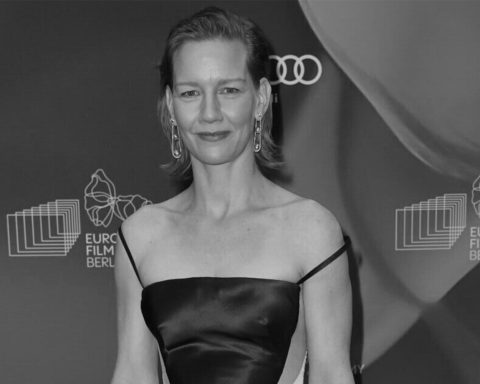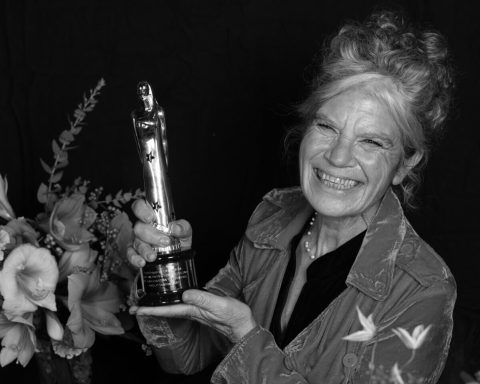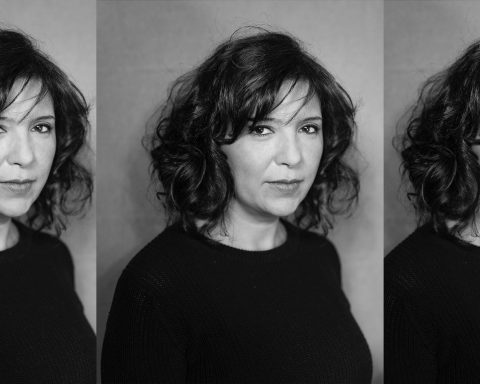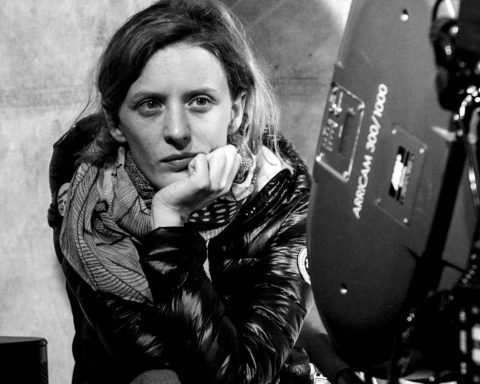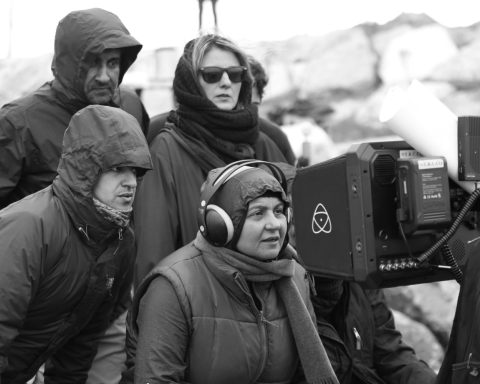Born in New Zealand, Stacey Lee’s work focuses on humanity, music, and movement. Her documentary short “Live Fast Draw Yung” premiered at the 2015 Tribeca Film Festival, winning awards in Atlanta and Tacoma. She was recently shortlisted for the Cannes Young Directors Award and selected as part of the DGA/AICP Diversity Showcase.
Tara Karajica talks to Stacey Lee about gender parity in film and music (or lack thereof), her feminism and her next projects as well as her debut feature, “Underplayed,” about the gender inequality in electronic music that premiered at this year’s Toronto International Film Festival.
How did you get into filmmaking?
Stacey Lee: For the first decade of my career, I was an advertising copywriter. I worked all over the world, writing campaigns for brands. And it was during my time in Amsterdam, working on the adidas account that I found myself spending a lot of time with athletes at the highest level; athletes whose journeys to success are inherently filled with all the things a good narrative arc has: a dream, a challenge, adversity, and success against extreme odds. In our downtime, when we weren’t making commercials, my boss, a NYC Film School Documentary graduate, encouraged us to go out, experiment and capture as much content with the athletes as we could. It was through these experiences that my love for documentary filmmaking was born. Coupled with the fact that as a copywriter, I also got to hire and watch some of the greatest directors of the time in action, I was in a very fortunate position. After ten years in the advertising industry, I decided to switch to being a director full-time. However, it took at least another seven years in order to get taken seriously, get representation and actually make the formal transition to being a director in a sustainable way.
How did Underplayed come about?
S.L.: Back in 2018, I was approached by my Canadian production company – who had been approached by Anomaly and the team at Bud Light Canada – about the prospect of making a film about gender inequality in the electronic music scene. Unbeknownst to anyone, I had actually done a short branded piece back in 2016 on the same subject, so I already had a deep knowledge of the major issues. And to be honest, two years later, and post the #metoo #timesup movements, I really thought and hoped things had changed. But the further I looked into the latest reports and statistics, I was surprised to see that female representation on line-ups, bookings and all the major indicators of success were still drastically low, and in some instances worse. It was almost like there had been a lot of talk, but not a lot of action. I then spent the next three months speaking with different industry folks from both sides of the business to hear their first-hand experiences, validate if the statistics reflected the truth and most importantly to figure out a way to tell this story in a way that wasn’t just going to be the same old issues rehashed, but ultimately something that drive global change. One of the major challenges going into this film was the fatigue around talking about the issue. Every artist was sick to death of being asked about how hard it is to be a “female” DJ. This was a challenge, but also a breakthrough in the way we decided to approach the film.
What was your intention when you set out to make this film and do you think it will have an impact on how female DJs are seen and treated in the future?
S.L.: My intentions were really to make this an actionable film, something that not only inspired the next generation of women coming up, but provide solutions, ideas, concepts that the industry and the viewers watching can apply to their own roles, lives and industries. To my previous comment, I wanted this film to evolve the conversation, so that being asked by journalists about “being a female DJ” was no longer the first question to leave their lips – maybe a question about concepts, ideas, talent? I also wanted it to connect with people beyond the electronic music scene because as the film world shows, gender inequality issues are not isolated; they are global, systematic and far-reaching across a lot of industries. In terms of how female DJs are seen and treated in the future, I wanted this film to lead by example. It was important to me I visualized how insanely talented and badass these women were, so there are no questions asked that they deserve to be there. But rather it raises the question in the viewer’s mind: “How many more are out there that we don’t know about?” I wanted talent to come first, and then the additional complexities surrounding gender to be interwoven beyond that.
How did you choose these particular DJs?
S.L.: The selection of DJs and producers and industry folk was chosen to reflect the full diversity of roles, positions and people who are engaged in the space, whether commercially successful or not. In the electronic music scene, there are two ecosystems – the mainstream and the underground and they both have different models of success and sustainability, and yet both suffer from a similar diversity problem. Furthermore, once you start noticing gender inequalities, you quickly see how bad the problem gets the more intersectional you go, so it was very important for me to represent those voices, especially because a lot of the most groundbreaking movements and genres in the electronic music scenes are born from within Black, Brown, and Hispanic, LGBT+ communities creating these scenes as a safe space to express themselves. This is such a beautiful concept and something that the world needs a lot more of… especially today. Another aspect that was important for me to represent was that this problem is not just for the women to comment on or solve. The way to bring about faster change is to engage both sides of the population, find the male allies, advocates and positions of power and make them just as accountable to the change as the women who are asking for it.
In that sense, there are also male voices in the film. How important is the male perspective in this particular story and to achieve balance in this field?
S.L.: Very important, because it is a lot harder to gain traction if you are speaking to the converted. Women all know the issue, they live it, they experience it everyday. We need both sides of the population in order to trigger real change. And, as the World Economic Forum says, it is going to take a century to close the gender gap, so the issue is more urgent than ever.
You portray these DJs as human beings, real women and not just some random women playing music on some stage, with their everyday lives, routines and struggles. Can you comment on this aspect of the documentary?
S.L.: This is an important signature of my filmmaking style; I am always trying to find ways to emotionally connect my subjects with the audience. Because the bottom line is, why are they going to care about gender inequality if they feel no empathy, love or compassion for the struggle of the subjects? You don’t have to like Rezz’s music in order to like her as person, in order to see how insane her work ethic is, or the Jedi mind tricks she used to block out the haters and manifest her dream, or how entrepreneurial she is in terms of how she runs her business and how many aspects of production she single-handedly controls. It is undeniable that she deserves a place at the top, and it is this point that I wanted to demonstrate with each of the talent we chose to highlight in the film.
Can you talk about the very suggestive title?
S.L.: The title is a comment on the under-heard, seen and represented voices in electronic music.
You also look back on the early days of electronic music with pioneers such as Suzanne Ciani and Delia Derbyshire, and you mix it with the newcomers. Why was it important to include them and contextualize this way the history of electronic music?
S.L.: Absolutely! So much of the misconceptions that hold women back from pursuing careers in the music industry are socialized. Traditionally, women are not seen to be technical or encouraged through education and upbringing to pursue careers in these fields. For me, it was extremely important to blow these myths out of the water by straightaway showing how much of the founding stages of the electronic music industry were born out of a group of technically inspired women tinkering away in laboratories and home studios. Connecting the dots between the foremothers to the new wave of artists today shows that this is not a new phenomena and this is not a skillset that is genetically coded on the X or Y chromosome; the feeling of inadequacy or that we don’t deserve a place is conditioned into us, and it is this conditioning we need to break. It was also important to include them so that they are not forgotten, even Suzanne Ciani commented that she didn’t even know of Delia Derbyshire until recently and what a huge loss that was for her to connect with a fellow contemporary.
What have you learnt while making this film? What issues have you encountered the most?
S.L.: I think one of the biggest challenges confronting the electronic music industry is changing the perception that diversity is risky, that the audience doesn’t want it, that, in our bottom-line-centered world, diversity is in conflict with the goals of business. However, quite the opposite is true. The more diverse your line-up, the more diverse your audience and larger pool of customers you have the potential to engage with. Furthermore, from a creative perspective, can you imagine how much more rich, vibrant and unexpected the world would be if we had people from all walks of life contributing to our sonic palette?
There is no specific mention of pay equality in the film, but it is very much an issue. Why is not explicitly discussed? Is it still as taboo as the number of top female DJs in the world?
S.L.: It is made mention of in the film, but rather than talk about why female DJs aren’t making the Forbes lists, we talk about the root of the problem; top 100 lists. As the film explains, top 100 lists and rankings inadvertently are creating a cyclical, self-serving problem where the same people are going to be on the lists year after year, because once you are on the list, you are more likely to get bookings and the higher up the list you are, the higher up the billings you are and the more you are going to get paid, which just means you have a major head-start going into the next year and so on and so forth… And, that’s just the mainstream scene. In the underground world, success is measured on different terms and it is far easier to be taken advantage of, be given the runaround or worse… not get paid for gigs. Each of these issues are explored in the film through the artist’s own personal experiences.
These women are calling for greater gender, racial, and ethnic equality and are demanding that the industry becomes more inclusive. Can you comment on that?
S.L.: Inclusivity is in the DNA of electronic music. The scene was literally born from it. So, it feels way out of whack to have a scene that is fronted by people that represent the opposite of that. Furthermore, music, by its very nature, is one of the great universal connectors. It is a powerful force that can bring people together, dancing to the rhythm of the same beat – no matter how different, divided or fundamentally opposed they are. So, to me, it feels mandatory that electronic music get back to these inclusive roots. We live in some of the most divided times imaginable, what if music can be a part of the solution rather than a contributing problem?
The film was made by an entirely female crew. Can you talk about this choice?
S.L.: It was about 75% female with a lot of great supporting males alongside us like my producer, William Crouse. We could hardly make a film about gender inequality in another scene without using the production process itself to be a part of the solution in our own scene as well. But while we were very aware to reflect diversity behind the scenes, we never wanted it to feel token or gimmicky. All of the talent were chosen because they were the best for the job. Most of our production crew had never done a feature let alone had anything of this nature on their reels, but after many conversations about the subtlety of our approach, the need for a safe space for our subjects to be vulnerable and heard, and most important the creative potential of this project, each and everyone not only stepped up to the challenge, they went over and above. It was a beautiful experience, and one that ultimately shone through in the tone of the film.
Are you a feminist? If so, how does it inform your filmmaking?
S.L.: A hundred percent! My female sensibility is extremely informative in my process. As I mentioned earlier, finding emotional connections with my subjects is central to the way I engage with my subjects – what moves them, frustrates them, hurts them, or makes them happy. I often bring my own vulnerabilities and experiences into the conversations to create bridges between us, and draw out aspects of their personality, background, stories that are relatable. It doesn’t matter how famous someone is, emotions are universal and our faults, flaws and insecurities are all part of what makes us human.
There has been a lot of talk about the situation of women in the film industry in the past almost three years. What is your take on the matter?
S.L.: I think organizations like Free the Work have done an incredible job at creating actionable change in the industry. Making women a mandatory part of the triple bid process had an immediate impact on the amount of jobs my production company would be able to bring me. It also opened up conversations for all the other roles in production as well, making it a lot easier to connect and learn about my female counterparts. There is still a very long way to go, with less than 4% of 1200 Hollywood films being helmed by a female director… However, I believe the steps are in place to force the industry to change.
Do you have a favorite female filmmaker and a favorite film by a female filmmaker?
S.L.: I have lots! Over the last year, I have loved Céline Sciamma (Portrait of a Lady on Fire) and Mati Diop (Atlantics). Documentary-wise, I am a huge fan of Waad Al-Kateab’s film For Sama. As a mother and a documentarian, the makings of that film are still blowing my mind. So, so powerful!
What are your next projects?
S.L.: I am currently working on a documentary series exploring the black maternal mortality crisis in the US, and another project that takes me back to my sporting doc days, following the US climbing team as they prepare to compete for the first time at the Olympics.
This interview was conducted at the 2020 (virtual) Toronto International Film Festival.






